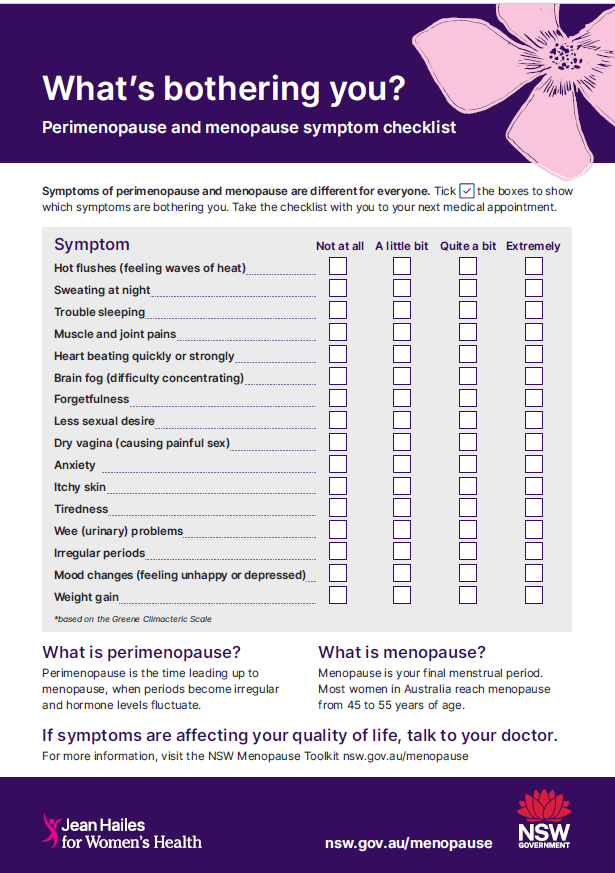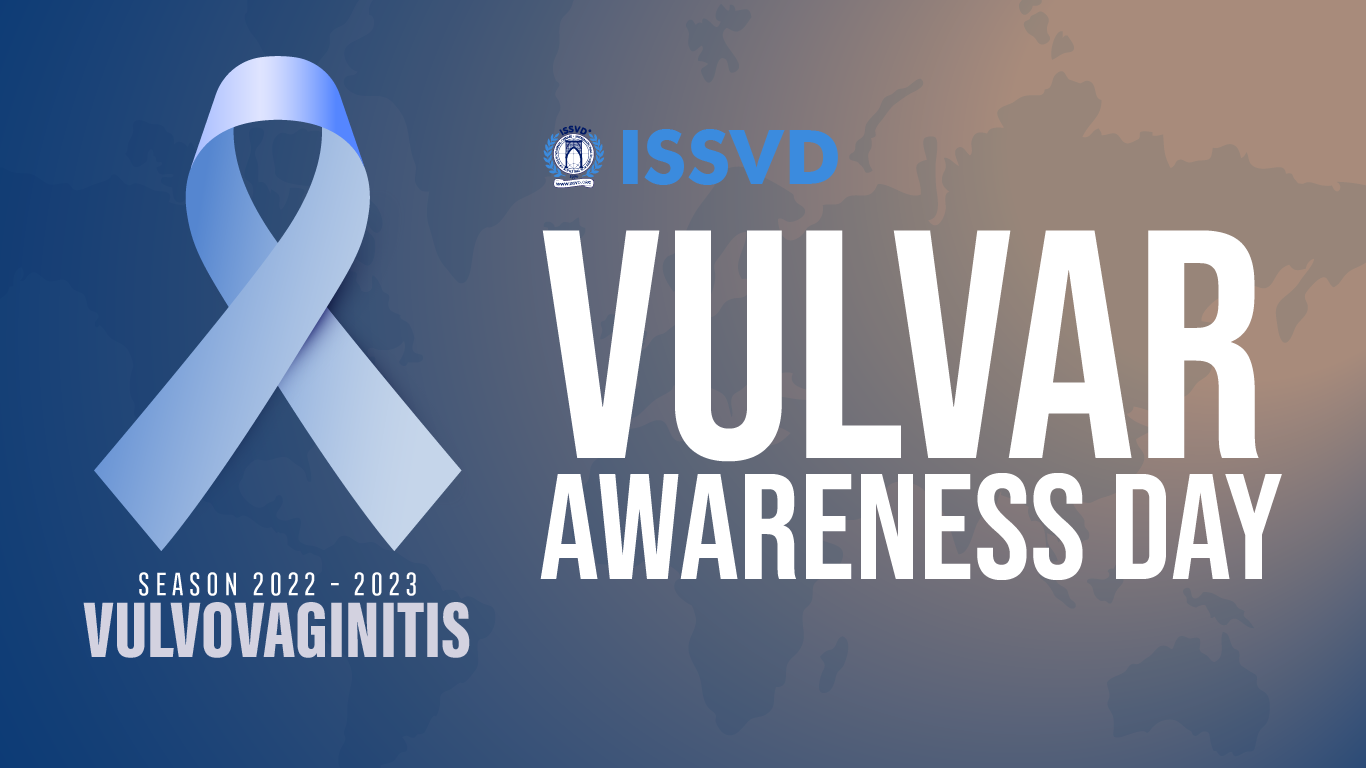“An effective and safe treatment, low-dose local estrogen
applied directly to the vagina relieves vaginal dryness
and discomfort with sexual activity”.1
Umbrella
What may the Vaginal and Vulval Treatment Options Umbrella include?
Depending on the Source (DotS) this Umbrella may include:
- Vaginal Estrogen/Oestrogen Products
- Vaginal Inserts
- Vaginal and Vulval Lubricants/Moisturizers
- Vaginal and Vulval Treatment Options
Vaginal and Vulval Treatment Options
What are some menopause vaginal and vulval or Genitourinary Syndrome of Menopause (GSM) treatment options?
On page one and two in Vaginal Dryness: Treatment Options the North American Menopause Society (NAMS) elaborate on:
 “There are many effective treatment options for GSM, including over-the-counter and prescription therapies. First-line therapies for less severe symptoms include nonhormone over-the-counter lubricants used as needed for sexual activity and moisturizers used regularly (several times per week) to maintain moisture. Prescription therapies include low-dose vaginal estrogens, vaginal dehydroepiandrosterone inserts, and oral ospemifene. Nonhormone lubricants and moisturizers can be combined for optimal symptom relief and can be used in combination with prescription therapies for more severe symptoms.
“There are many effective treatment options for GSM, including over-the-counter and prescription therapies. First-line therapies for less severe symptoms include nonhormone over-the-counter lubricants used as needed for sexual activity and moisturizers used regularly (several times per week) to maintain moisture. Prescription therapies include low-dose vaginal estrogens, vaginal dehydroepiandrosterone inserts, and oral ospemifene. Nonhormone lubricants and moisturizers can be combined for optimal symptom relief and can be used in combination with prescription therapies for more severe symptoms.
- Nonhormone Remedies
- Vaginal Lubricants…
- Vaginal Moisturizers…
- Regular Sexual Stimulation…
- Expanding Your Views of Sexual Pleasure…
- Vaginal Dilators…
- Pelvic Floor Exercises…
- Vaginal Hormone Therapy…
- An effective and safe treatment, low-dose local estrogen applied directly to the vagina relieves vaginal dryness and discomfort with sexual activity. Improvements usually occur within a few weeks or months with consistent use.
- FDA-approved low-dose vaginal estrogen products…
- Dehydroepiandrosterone (DHEA; Prasterone)
- Low-dose vaginal estrogen or DHEA may be options for…
- Systemic Estrogen Therapy
- Other Therapies…
- Ospemifene
- Vaginal Laser Therapy…”.2
Vaginal Moisturizers and Vaginal Lubricants
What vaginal moisturizers and vaginal lubricants are available?
In Vaginal Atrophy: Diagnosis & Treatment – Treatment the (United States) Mayo Clinic elaborate on:
- “Vaginal moisturizers. Try a vaginal moisturizer (K-Y Liquibeads, Replens, Sliquid, others) to restore some moisture to your vaginal area. You may have to apply the moisturizer every few days. The effects of a moisturizer generally last a bit longer than those of a lubricant
- Water-based lubricants. These lubricants (Astroglide, K-Y Jelly, Sliquid, others) are applied just before sexual activity and can reduce discomfort during intercourse. Choose products that don’t contain glycerin or warming properties because women who are sensitive to these substances may experience irritation. Avoid petroleum jelly or other petroleum-based products for lubrication if you’re also using condoms, because petroleum can break down latex condoms on contact”.3
In Vaginal Dryness: Care and Treatment – How Is Vaginal Dryness Treated? Lubricants and Moisturizers for Vaginal Dryness the Cleveland Clinic explain:
- Vaginal moisturizers: Apply vaginal moisturizers to the inside of your vagina every few days to keep your vaginal lining healthy. Some examples include Replens™, Luvena® and KY® Liquibeads.
- Vaginal lubricants: Apply lubricants just before sexual intercourse to ease discomfort caused by sex. Astroglide® and KY® Jelly are examples of water-based vaginal lubricants. There are also silicone-based and oil-based lubricants”.4
Vaginal Estrogen
What is vaginal estrogen?
In Topical Estrogens and Non-Hormonal Preparations for Postmenopausal Vulvovaginal Atrophy: An EMAS Clinical Guide the European Menopause and Andropause Society (EMAS) explain:
 “An individualized approach is required for the management of VVA. Topical low-dose estrogens are effective and also alleviate urinary incontinence and prevent recurrent urinary tract infections. Women should not be denied long-term use of topical estrogens as long as they feel that this treatment is of benefit to them, because the safety data are reassuring.
“An individualized approach is required for the management of VVA. Topical low-dose estrogens are effective and also alleviate urinary incontinence and prevent recurrent urinary tract infections. Women should not be denied long-term use of topical estrogens as long as they feel that this treatment is of benefit to them, because the safety data are reassuring.
Non-hormonal preparations (lubricants and moisturizers) should be the first-line treatment for VVA in women taking adjuvant endocrine therapies for cancers considered to be hormone-dependent. They can be used over the long term”.5
On page one in Deciding About Hormone Therapy Use, published July 2022, the NAMS elaborate on:
“If you are bothered only by vaginal dryness, you can use very low doses of estrogen placed directly into the vagina. These low doses generally do not raise blood estrogen levels above postmenopause levels and do not treat hot flashes. You do not need to take a progestogen when using only low doses of estrogen in the vagina. (The MenoNote “Vaginal Dryness” covers this topic in detail)”.6
In Vaginal Atrophy: Diagnosis & Treatment – Treatment the Mayo Clinic elaborate on:
- “Topical Estrogen
- Vaginal Estrogen Cream (Estrace, Premarin)…
- Vaginal Estrogen Suppositories (Imvexxy)…
- Vaginal Estrogen Ring (Estring, Femring)…
- Vaginal Estrogen Tablet (Vagifem)…
- Ospemifene (Osphena)…
- Prasterone (Intrarosa)…
- Systemic Estrogen Therapy…
- Vaginal Dilators…
- Topical Lidocaine…
- If you’ve had breast cancer…”.7
On page three in the Joint Position Statement By the British Menopause Society, Royal College of Obstetricians and Gynaecologists and Society for Endocrinology on Best Practice Recommendations for the Care of Women Experiencing the Menopause, published 10 June 2022, one of the recommendations is:
- “Low-dose and ultra-low dose vaginal oestrogen preparations can be taken by perimenopausal and menopausal women experiencing genitourinary symptoms and continued for as long as required. All vaginal oestrogen preparations have been shown to be effective in this context and there is no requirement to combine vaginal oestrogens with systemic progestogen treatment for endometrial protection, as low-dose and ultra-low dose vaginal oestrogen preparations do not result in significant systemic absorption or endometrial hyperplasia”.8
Other Options
What other options are available?
In Vaginal Atrophy: Diagnosis & Treatment – Treatment the Mayo Clinic elaborate on:
- “Ospemifene (Osphena)…
- Prasterone (Intrarosa)…
- Systemic Estrogen Therapy…
- Vaginal Dilators…
- Topical Lidocaine…
- If you’ve had breast cancer…”.9
Health Care Provider
What if I would like to make down there less bothersome?
If you would like to make down there less bothersome, it may be in your best interest to choose to talk to your health care provider about this.
In Vaginal Discomfort: Discomfort Not Directly Related To Menopause the NAMS note:
“Because vaginal discomfort can arise from so many different sources, persistent symptoms of dryness, irritation, burning, itchiness, or pain should be evaluated by a healthcare provider to determine their cause”.10
In Vaginal Atrophy: Symptoms & Causes – Symptoms: When To See A Doctor the Mayo Clinic encourage us to:
Also make an appointment to see your doctor if you experience painful intercourse that’s not resolved by using a vaginal moisturizer (K-Y Liquibeads, Replens, Sliquid, others) or water-based lubricant (Astroglide, K-Y Jelly, Sliquid, others)”.11
Health Topics A-Z
Where may I find Health Topics A-Z related to Vaginal and Vulval Treatment Options?
In Health Topics A-Z you may find:
Links
Where may I find Links related to Vaginal and Vulval Treatment Options?
Your Country may have Links similar to:
Links
This Links List to third party websites is neither comprehensive nor exhaustive. Inclusion on this Links List does not imply endorsement or recommendation. Non-inclusion on this Links List does not imply non-endorsement or non-recommendation. Third party websites are not under the control of Meno Martha International Menopause Directory. Third party websites may contain explicit medical images and/or sexual references. Please read Meno Martha International Menopause Directory’s Links Policy before proceeding to a Link. Please contact Webmaster if you experience a problem with a Link.New or Updated
- Menopause: Understanding the Changes and Finding Relief | Dr Susan Davis | The Proof Podcast EP 256
- Q&A: Normalize Seeking Proper Bacterial Vaginosis Diagnosis, Treatment [08 March 2024]
- Video Series-2024: Preparing for Your Menopause Health Care Visit [13 January 2024]
- Webinars: Previous – Pay Attention on Your Way In! The Vulva Is An Important Organ Too
- Are Probiotics Good for Vaginal Health?
- Askearlymenopause.org [Ask EM] [+ Video: What Is Early Menopause?]
- Australian and New Zealand Vulvovaginal Society: Patient Information About Vulval Diseases
- BMS TV: Hormone Replacement Therapy (HRT)
- BMS TV: Urogenital Atrophy
- Bioidentical Hormones: Are They Safer?
- Caredownthere.com.au
- Consumer Health: Treating Vaginal Dryness After Menopause
- Deciding About Hormone Therapy Use
- Disorders of the Vulva: Common Causes of Vulvar Pain, Burning, and Itching
- Douching
- Dr Louise Newson: The Truth About the Menopause & HRT
- Dr. Stephanie Faubion – Genitourinary Syndrome of Menopause
- Endometrial Safety of Low-Dose Vaginal Estrogens
- Endometrial Safety of Low-Dose Vaginal Estrogens [Video]
- Estrogen (Vaginal Route)
- FAQs: Vulvovaginal Health
- FAQs: When Sex Is Painful
- Find A Menopause Practitioner [United States and Other]
- Find An AMS Doctor [Australasian Menopause Society i.e. Australia and New Zealand]
- Find Your Nearest BMS Menopause Specialist [British Menopause Society]
- Genitourinary Syndrome of Menopause and the False Promise of Vaginal Laser Therapy
- Hormone Therapy: Is It Right for You?
- How Do I Deal With Vaginal Atrophy? — Ask Dr Jean
- I Forgot To Ask the Doctor – E9: The Menopause: Can Every Woman That Wants It Have HRT?
- International Society for the Study of Vulvovaginal Diseases: Patient Handouts
- International Society for the Study of Women’s Sexual Health: Find A Provider
- Later Years (Around 50 Years and Over): Menopause and Post Menopause Health – Hormone Replacement Therapy (HRT) [+ Video: Is HRT Bad for You?]
- Looking After Yourself
- Lubricant Alternatives: What To Use and What To Avoid
- Menopause
- Menopause
- Menopause & Herbs
- Menopause Management Options
- Menopause Preparedness Toolkit Video Series: Common Conditions Associated With Menopause and Midlife
- Menopause Symptoms and Relief
- Menopause Symptoms: Mayo Clinic Expert Outlines Hormone and Nonhormonal Therapies
- Menopause Treatments: What Works, What Doesn’t
- Menopause, Perimenopause, Hormone Therapy and Other Treatments With Madelyn Butler, MD [Podcast]
- Menopause: Diagnosis & Treatment
- Menopause: Diagnosis and Management – Information for the Public: Questions To Ask About Menopause [NICE Guideline]
- Menopause: Menopause – Hormone Treatments
- Menopause: Symptoms & Causes
- Menopause: Understanding the Changes and Finding Relief | Dr Susan Davis | The Proof Podcast EP 256
- Mymenoplan.org [My Menoplan, United States]
- National Center for Complementary and Integrative Health: Herbs At A Glance
- National Center for Complementary and Integrative Health: How Safe Is This Product or Practice?
- National Center for Complementary and Integrative Health: Sage
- Navigating Menopause: Expert Insights and Solutions | Dr Susan Davis | The Proof Podcast EP 245
- Non-Estrogen Treatments for Menopausal Symptoms
- Patty Brisben Foundation for Women’s Sexual Health
- Patty Brisben Foundation for Women’s Sexual Health: Guide To Sexual Health Providers
- Patty Brisben Foundation for Women’s Sexual Health: New! Vulvovaginal Pain Log
- Perimenopause and Menopause Symptom Checklist

- Prosayla Supported by ISSWSH [International Society for the Study of Women’s Sexual Health]
- Q&A: Normalize Seeking Proper Bacterial Vaginosis Diagnosis, Treatment
- Symptoms of Menopause
- The 2020 Genitourinary Syndrome of Menopause Position Statement of The North American Menopause Society
- The Truth About Menopause Supplements | Dr Sarah Berry
- The Vaginal Laser Therapy Versus Vaginal Estrogen Therapy: The VeLVET Trial
- Therapy for the Effects of Menopause
- Tips To Help Manage Menopause Symptoms
- Topical Estrogens and Non-Hormonal Preparations for Postmenopausal Vulvovaginal Atrophy: An EMAS Clinical Guide
- Urogenital Problems
- Vaginal Atrophy
- Vaginal Atrophy
- Vaginal Atrophy
- Vaginal Atrophy: Diagnosis & Treatment – Treatment
- Vaginal Dryness
- Vaginal Dryness
- Vaginal Dryness
- Vaginal Dryness
- Vaginal Dryness After Menopause: How To Treat It? I’m postmenopausal and often have vaginal dryness, which makes intercourse painful. Is there anything I can do about it?
- Vaginal Dryness Alternative Treatments
- Vaginal Dryness: What To Do About It
- Vaginal Laser Therapy for GSM/VVA: Where We Stand Now – A Review By the EUGA Working Group on Laser
- Vaginal Oestrogen
- Video Series-2022: Discussing Sexual Health Concerns With Your Health Care Professional
- Video Series-2023: NAMS 2023 Nonhormone Therapies Position Statement for Bothersome Menopause Symptoms
- Video Series-2024: Preparing for Your Menopause Health Care Visit [13 January 2024]
- Vulva Irritation: Treatment and Management [+ Video]
- Vulvar Awareness Day [18 September 2023]

- Vulvovaginal Atrophy
- Webinars: Previous – Pay Attention on Your Way In! The Vulva Is An Important Organ Too
- Webinars: Previous – Sexual Health Issues In Menopause
- What Is Vaginal Steaming and Is It Safe?
- When Sex Hurts – Podcast [Vaginismus and Vulvodynia]
- Why You Should Never Douche
- Wild Yam
Sources
Where may I find the Sources quoted?
You may find the Sources quoted at:
Sources
- Vaginal Dryness: Treatment Options. 2022:1-2. North American Menopause Society https://www.menopause.org/docs/default-source/for-women/mn-vaginal-dryness.pdf Accessed: 09 March 2024
- Vaginal Dryness: Treatment Options. 2022:1-2. North American Menopause Society https://www.menopause.org/docs/default-source/for-women/mn-vaginal-dryness.pdf Accessed: 09 March 2024
- Vaginal Atrophy: Diagnosis & Treatment – Treatment. 17 September 2021. Mayo Clinic https://www.mayoclinic.org/diseases-conditions/vaginal-atrophy/diagnosis-treatment/drc-20352294 Accessed: 09 March 2024
- Vaginal Dryness: Care and Treatment – How Is Vaginal Dryness Treated? Lubricants and Moisturizers for Vaginal Dryness. Last Reviewed: 26 July 2022. Cleveland Clinic https://my.clevelandclinic.org/health/symptoms/21027-vaginal-dryness Accessed: 09 March 2024
- Topical Estrogens and Non-Hormonal Preparations for Postmenopausal Vulvovaginal Atrophy: An EMAS Clinical Guide. 13 April 2021. European North Menopause and Andropause Society https://www.maturitas.org/article/S0378-5122(21)00061-X/fulltext Accessed: 09 March 2024
- Deciding About Hormone Therapy Use. 2022:1. North American Menopause Society https://www.menopause.org/docs/default-source/professional/menonote-deciding-about-ht-2022.pdf Accessed: 09 March 2024
- Vaginal Atrophy: Diagnosis & Treatment – Treatment. 17 September 2021. Mayo Clinic https://www.mayoclinic.org/diseases-conditions/vaginal-atrophy/diagnosis-treatment/drc-20352294 Accessed: 09 March 2024
- Hamoda, H., Mukherjee, A., Morris, E., Baldeweg, S. E., Jayasena, C. N., Briggs, P., Moger, S. Joint Position Statement By the British Menopause Society, Royal College of Obstetricians and Gynaecologists and Society for Endocrinology on Best Practice Recommendations for the Care of Women Experiencing the Menopause. First Published 10 June 2022:3-4. https://journals.sagepub.com/doi/full/10.1177/20533691221104879 Accessed: 09 March 2024
- Vaginal Atrophy: Diagnosis & Treatment – Treatment. 17 September 2021. Mayo Clinic https://www.mayoclinic.org/diseases-conditions/vaginal-atrophy/diagnosis-treatment/drc-20352294 Accessed: 09 March 2024
- Vaginal Discomfort: Discomfort Not Directly Related To Menopause. North American Menopause Society https://www.menopause.org/for-women/sexual-health-menopause-online/causes-of-sexual-problems/vaginal-discomfort Accessed: 09 March 2024
- Vaginal Atrophy: Symptoms & Causes – Symptoms: When To See A Doctor. 17 September 2021. Mayo Clinic https://www.mayoclinic.org/diseases-conditions/vaginal-atrophy/symptoms-causes/syc-20352288 Accessed: 09 March 2024



